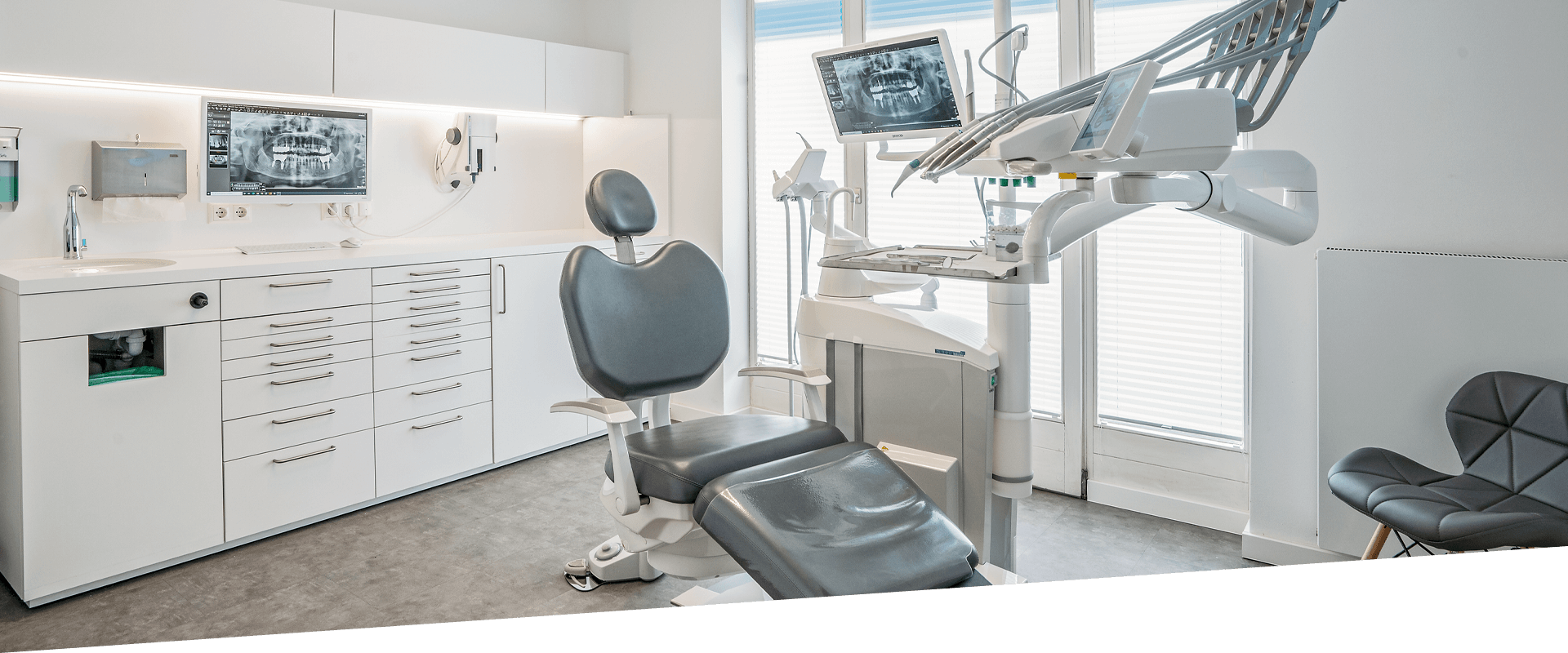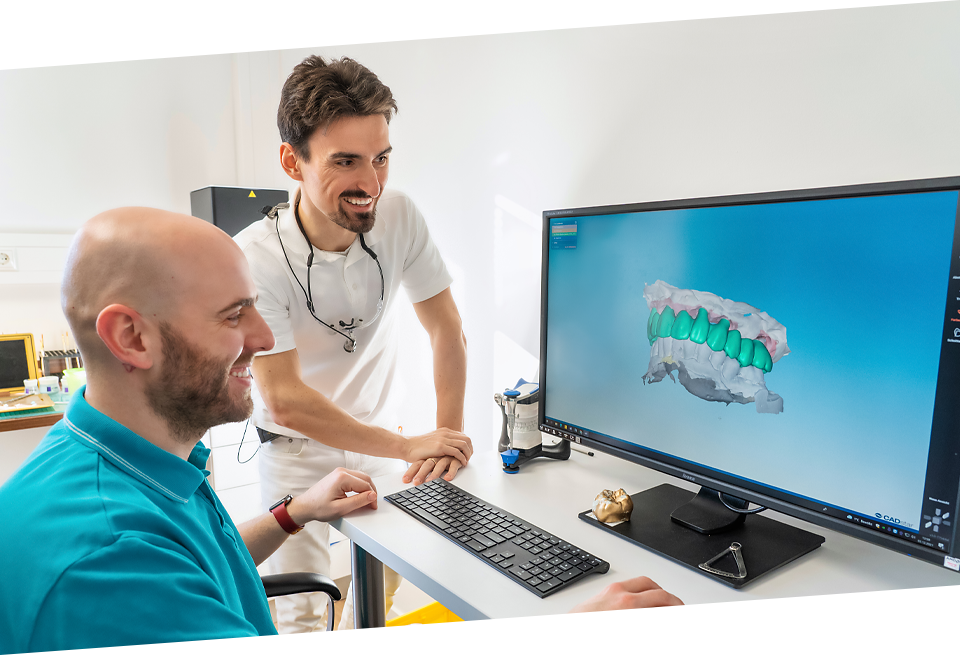
PROSTHODONTIC
Aesthetics and function in harmony
We understand the importance of a healthy and aesthetic smile. Thanks to advanced techniques in modern dental prosthetics, we are able to restore aesthetics and function even in the event of complete tooth loss, thus significantly improving your quality of life.
Solutions in dental prosthetics
Tooth loss can have various causes and affects people of all ages. Our goal is to offer you a prosthetic solution that meets both your aesthetic wishes and your functional needs. In dental prosthetics, a basic distinction is made between two main types of dentures.

What kind of dentures are possible?
REMOVABLE DENTURES
In the case of removable dentures, a differentiation is made between partial and total or full dentures. In general, removable dentures offer the advantage that they can be expanded if your own tooth has to be removed. Furthermore, your own remaining teeth need little or hardly any shaping.
PARTIAL DENTURES
Partial dentures can close smaller or larger gaps in a jaw. They are attached to existing teeth by means of retaining elements. They can be used without much effort and do not require surgical intervention.
TOTAL DENTURES
Total or full dentures are made of gum-colored plastic into which plastic teeth are inserted. The full denture gets its hold due to suction forces generated by the saliva. Full dentures are used when all teeth are missing or only few are left.
FIXED DENTURES
The fixed dentures come closest to the natural tooth situation and can thus almost completely restore normal chewing and speech function. The dentures are attached to existing teeth; in this case, the chewing force is transmitted from an adjacent tooth. Fixed dentures include bridges, crowns and veneers.
BRIDGES
A bridge is a fixed denture that makes it possible to replace one or more missing teeth. The insertion of bridges does not require surgical intervention compared to the use of implants. Fixed dental prostheses (fake teeth) used to replace missing teeth by anchoring artificial teeth to adjacent natural teeth. A dental bridge is made up of two crowns that go over the neighboring teeth with a prosthetic tooth in the middle – forming a “bridge”.
CROWNS
If the destruction of a tooth due to very deep caries or far advanced, or if there is a risk that it will break apart due to damage, it is often no longer possible to rebuild the tooth permanently and stably with a filling. With the help of a crown, however, shape and aesthetics can be restored. There are different types of dental crowns. Depending on the initial situation and requirements, partial crowns, veneering crowns or all-ceramic crowns are inserted. The dentist will prep the tooth small to compensate the crown (cap like shape) before taking impression mould or digital scan. After which, the mould/scan is being sent to the lab, to fabricate the crown before cementing it on to the teeth permanently.
IN OUR PRACTICE WE USE ONLY CERAMIC FIXED DENTURES
With zirconium oxide, a high-tech ceramic is now available that has already proven itself in many extreme situations. Heat shields in the space shuttle, brake discs in sports cars and ball heads of artificial hip joints. And for over 10 years, this high-tech ceramic has been giving a completely new image to prosthetic restorations in dentistry.